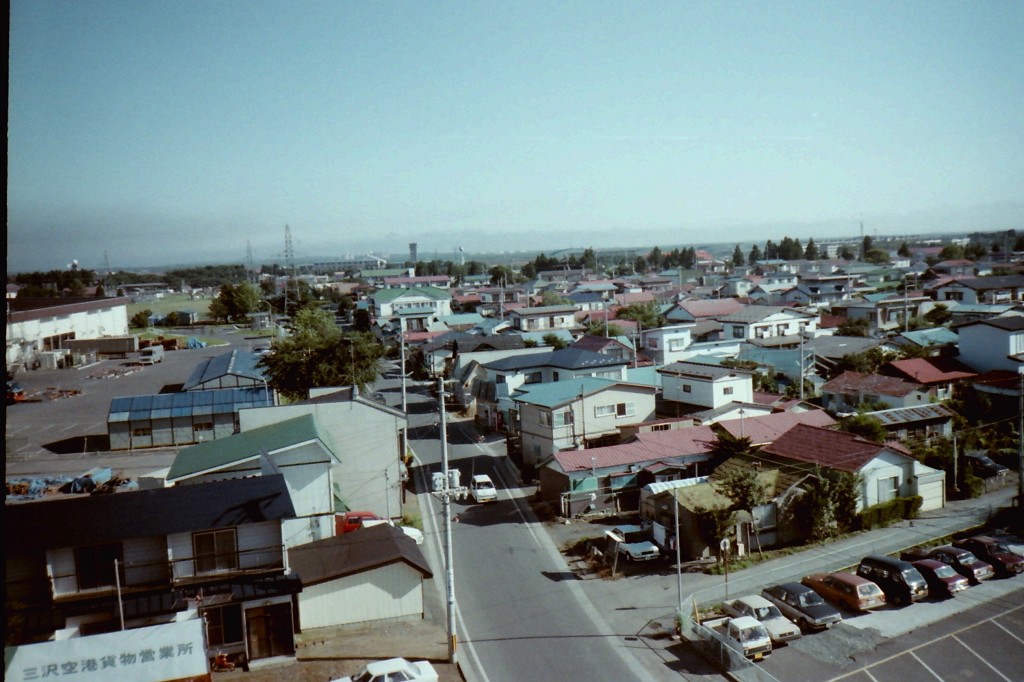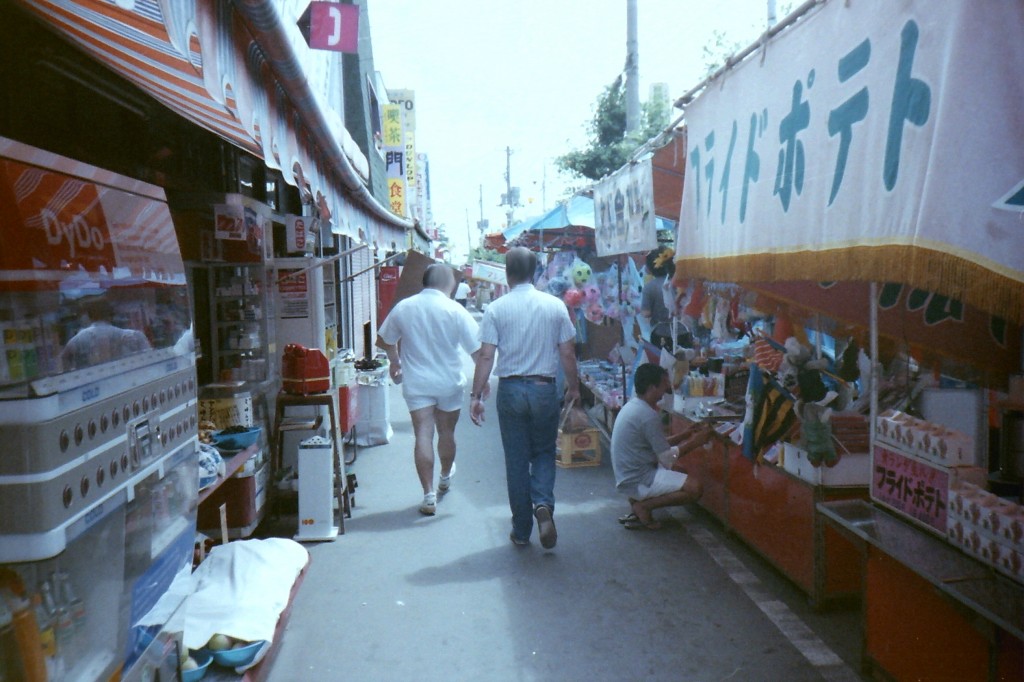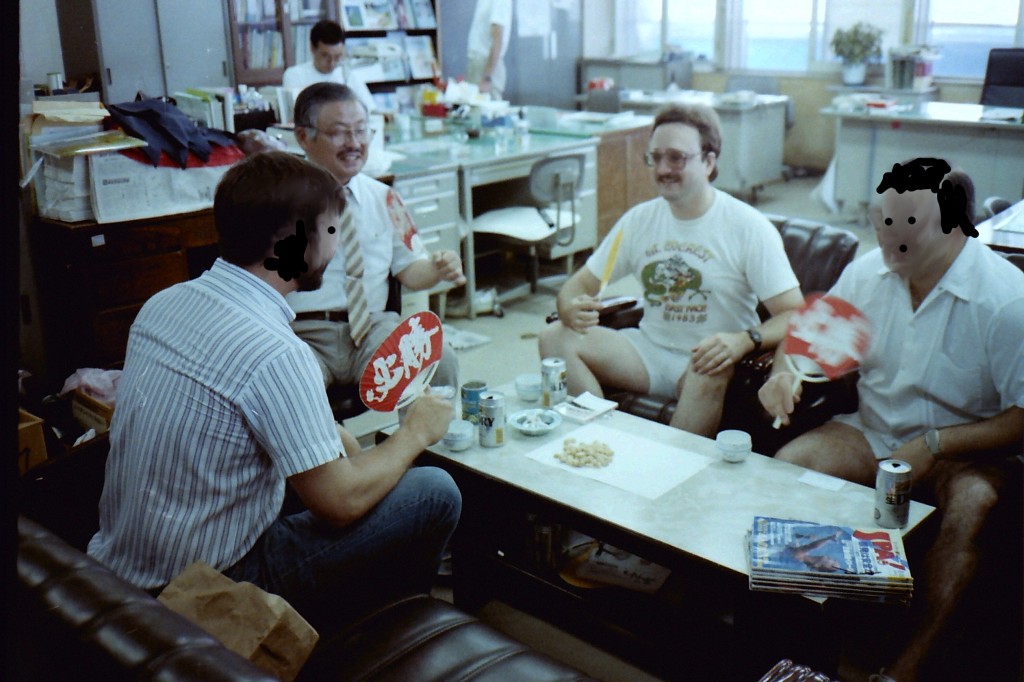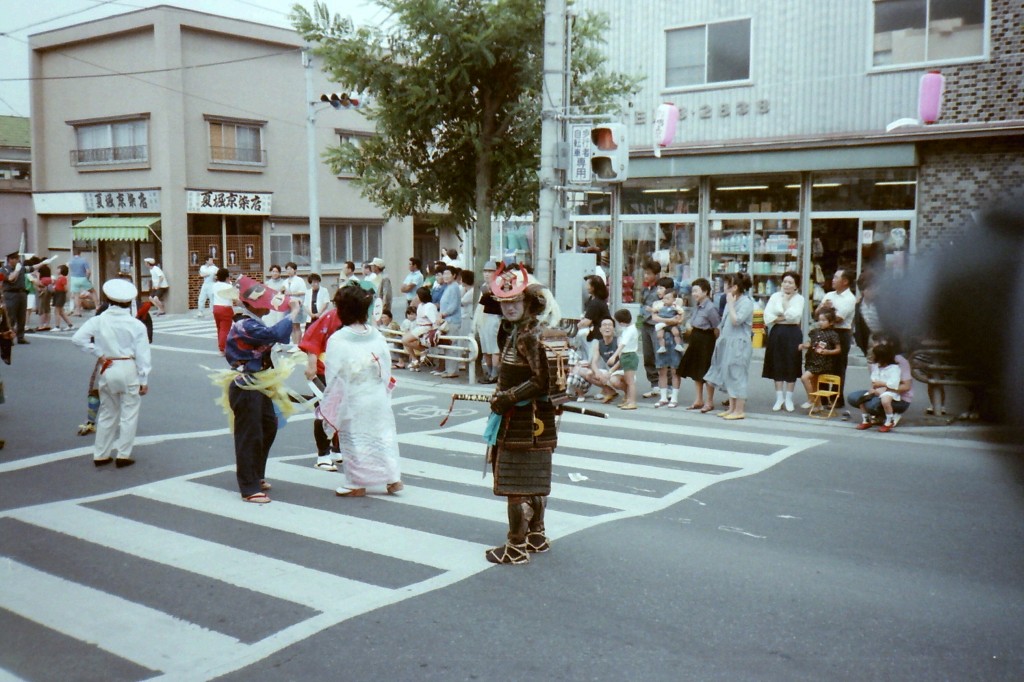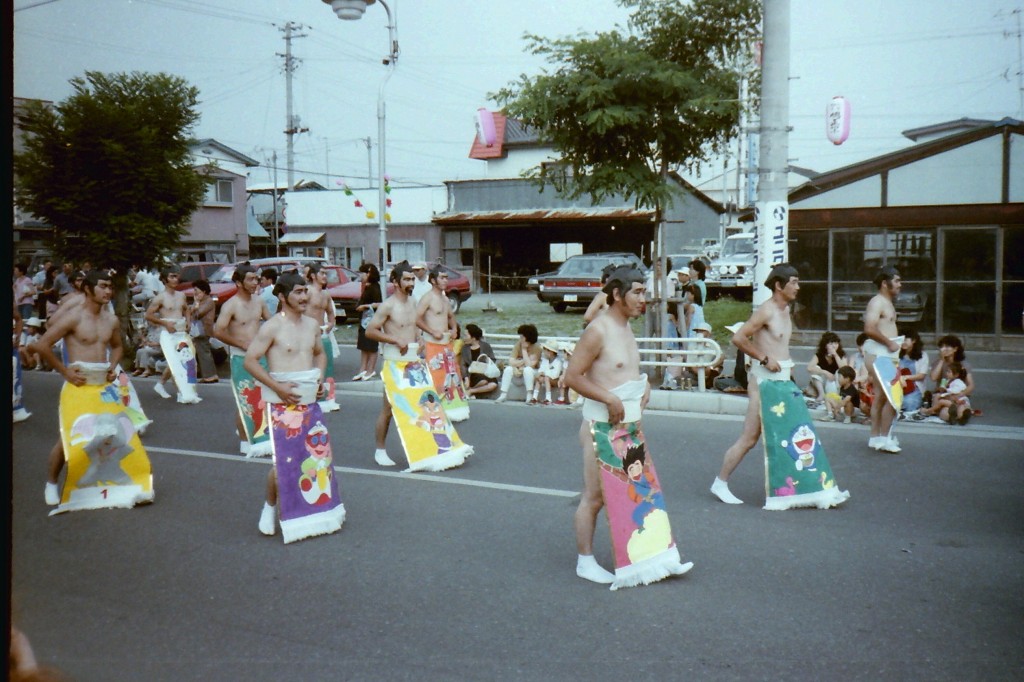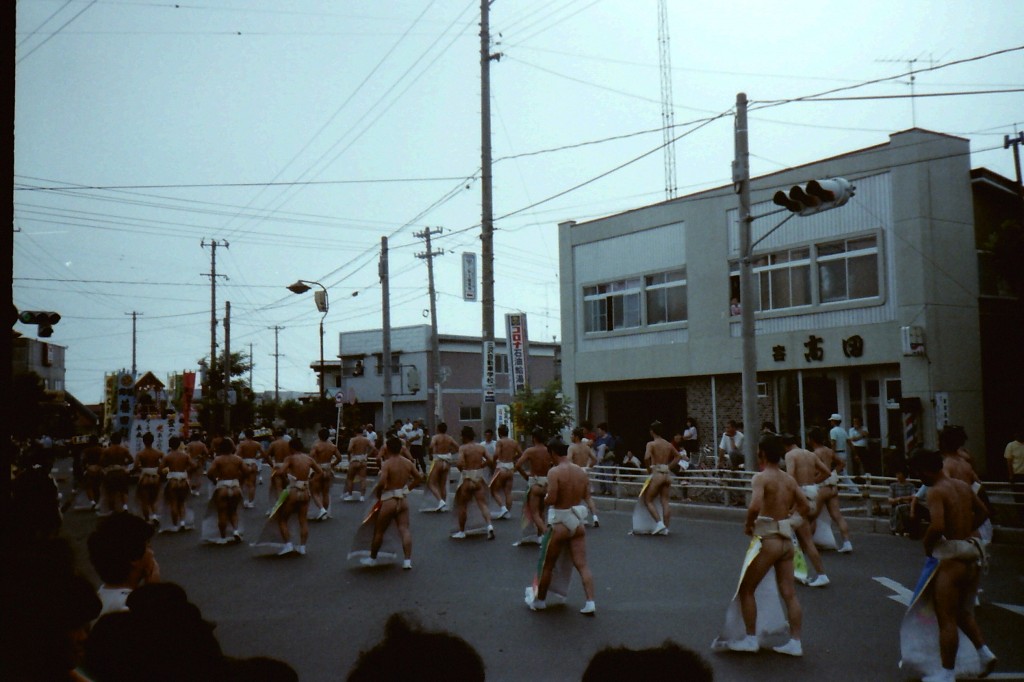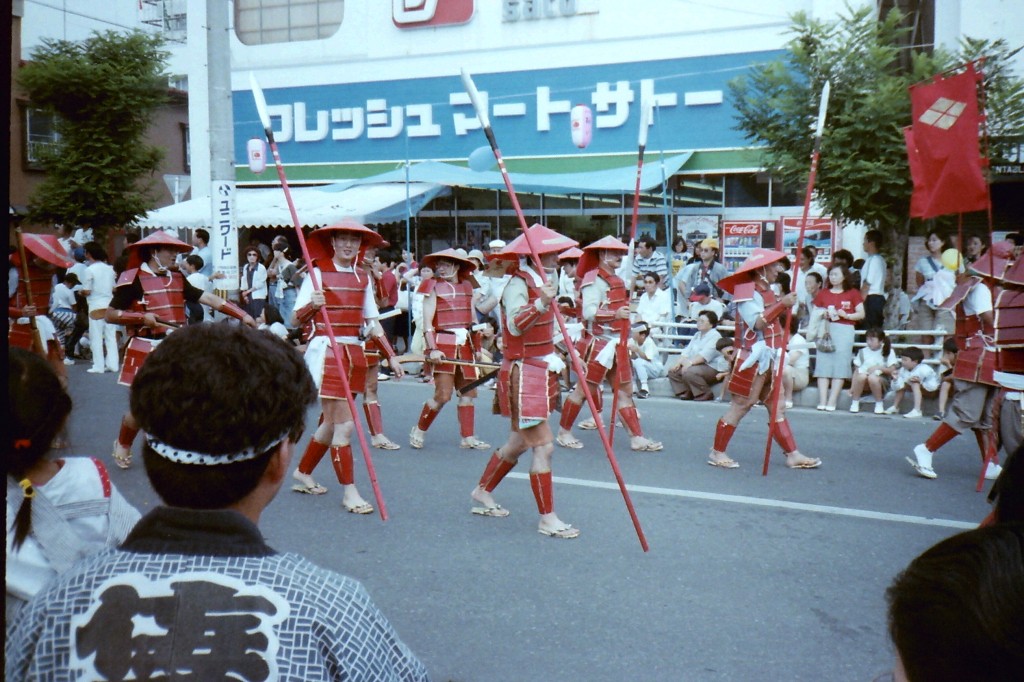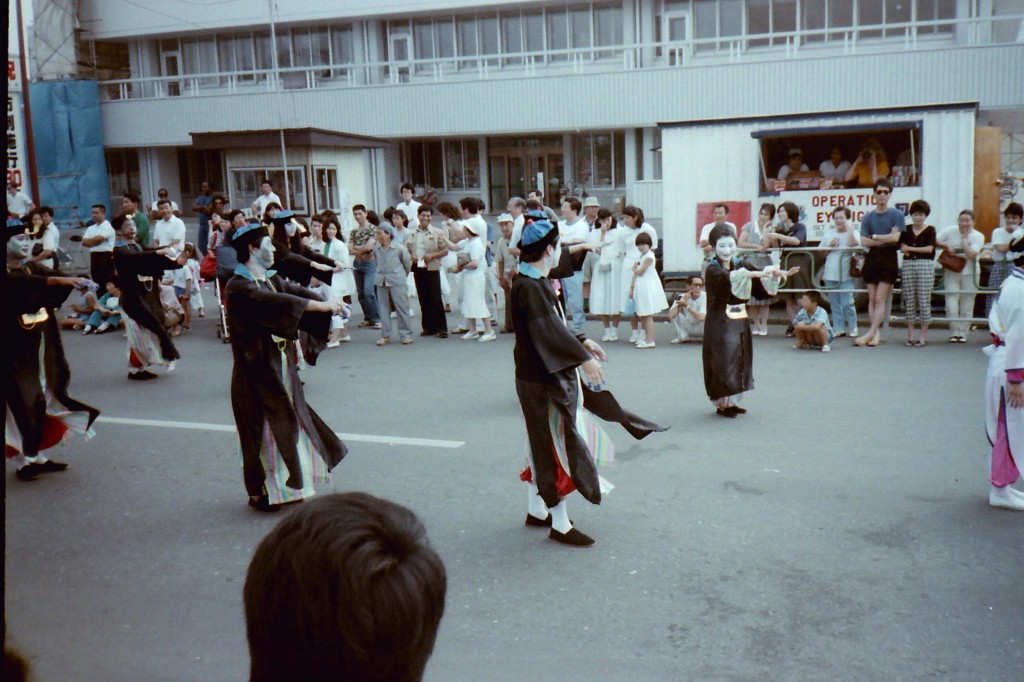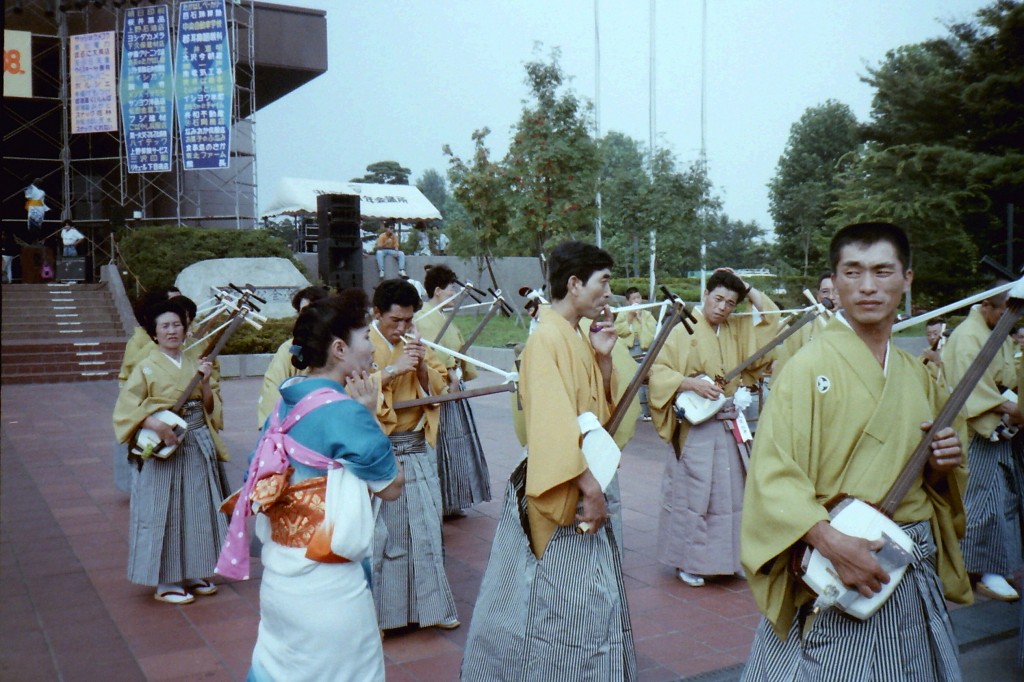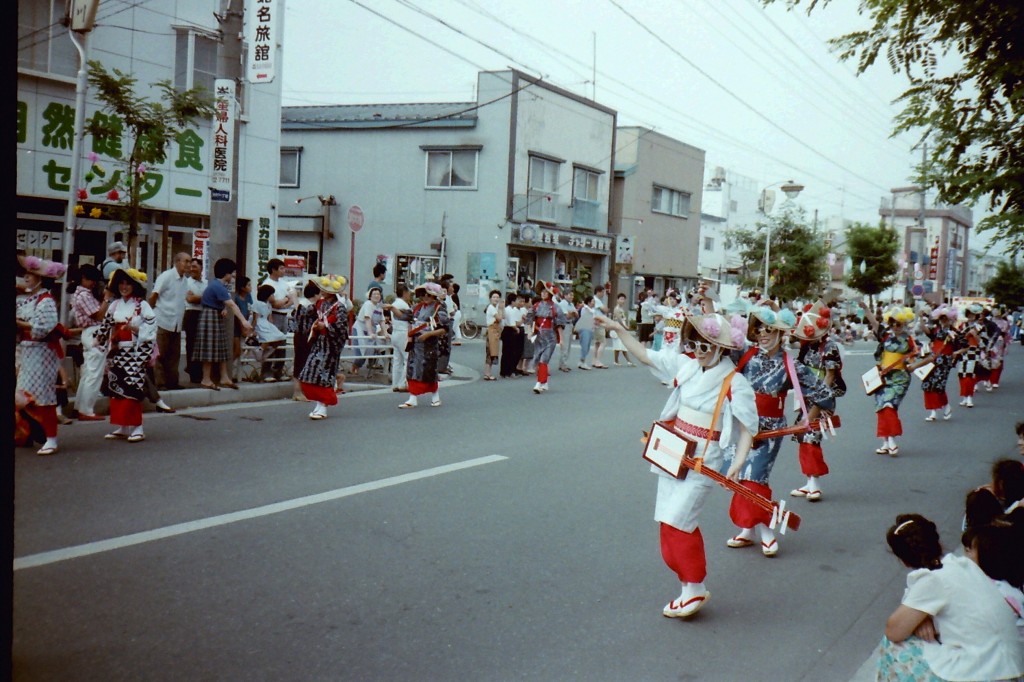The morning of the city festival, I took several photos from the top of the Park Hotel. This one is looking almost due north.
The food booths went on forever. The one on the right was selling fried potatoes, but you are more likely to find grilled squid on a stick (yaki ika) and a pancake with everything but the kitchen sink on it (okonomiyaki). If you get thirsty, you just drop some yen coins in the vending machines, several examples of which are on the left. A lot of beer and cold sake were dispensed from the machines that day.
Also on the morning of the parade, a couple of my coworkers and I were invited to visit the Misawa City offices. We got quite a tour, and something was taking place at this table that you would never see in America — they served us beer and sake during working hours. We were preparing to take part in the parade, also known as the Mikoshi Parade, where we carried a float with the Japanese American Friendship Club, or JAFC. We had met one of the city workers in a nice little restaurant called Hana Zen, which means “flower table,” and he invited us to visit the city offices.
A mikoshi is a portable shrine, and they are often made to be very heavy in order to demonstrate the physical abilities of the young men carrying them. I’ll post some mikoshi another time, but if you’d like to see an example, check out this YouTube link:             2009 Mikoshi Parade
In English, JAFC stands for “Group of Americans Helping Japanese Improve their English Skills.” We knew that going in, though, and it was still fun anyway. At the meetings, the Japanese were charged dues, but the Americans got in free.  We paid anyway, however, just to help them with their expenses. It was really funny, though, how sometimes they would argue with us Americans as to what constituted proper English.
You have probably noticed by now thatI blurred-out some of the faces. That is partly to preserve the anonymity of the dudes I worked with, but also because they don’t really deserve to appear in this blog. I didn’t know much about these guys when I first began working with them, but I believe what must have happened to them both, simultaneously, in different cities, while they were young, were incidents of their misunderstanding the advice given them by their mothers. They must have had their stereos turned up while their moms were saying something like, “Now, little Tommy/Danny (names changed), about one percent of the time everyone’s going to be a complete narcicistic, antisocial miscreant, and so will you. But you should try to be nice to people the other ninety-nine percent of the time.” Unfortunately, little Tommy and Danny got the numbers backwards, and this is the only plausible explanation for their behavior. I did suspect that questionable things would eventually occur with one of the guys, since my supervisor at the company from which we both had come told me that the reason they couldn’t “find” a job for him at the end of a contract was because they had no desire to keep him around any longer. After a few months of putting up with this sociopath, I understood this all too well. One day, after everyone else had left the office, he pulled out a switchblade and brandished it in front of my face in a vain attempt to make sure I knew who the “boss” was. On another occasion,  in order to convey to me an additional veiled threat, he hit a table with with a piece of hard plastic he employed in lieu of brass knuckles. No wonder his wife left him as soon as he departed the USA. After his divorce was final I heard him mumble, “Next time I’m getting a damn slave.” And I woudn’t doubt that he would admit to saying that, too, and be proud of it.
The parade is just about to get started, and this samuri has spotted me taking his picture. I had to run away to keep from becoming shish-kabob (heh-heh).
These guys needed more than just the towels they were holding in front. In the next photo, you’ll see what I mean.
’nuff said? Only in Japan.
I don’t know whether they made these costumes fresh each year or used them over and over. In any case, it obviously took a lot of work to produce them.
These folks were imitating a Chinese cult-classic movie akin to Night of the Living Dead. I actually caught this movie on TV one evening. The zombies held their arms out in front of them and hopped toward their victims. The only way to stop a zombie was to tack a strip of paper containing a prayer or incantation to its forehead.Â
Here’s a small mikoshi modeled after the Chinese cult-classic movie.
These shamisen players were getting ready to march in the parade. At least two of them were taking this opportunity to light up. Virtually everyone in Japan smoked. I was told that cigarettes were approved by the government, and the Japanese believed the government could do no wrong, therefore cigarettes were not dangerous. In any case, once everyone was hooked, it made no difference. I suspect the Yakusa got a healthy kickback on all cigarette transactions.
I’m pretty sure all these were women.
This is the mikoshi the Japanese American Friendship Club was preparing to carry in the parade. You may have seen the “beckoning cat” as a ceramic decoration in both Japanese and Chinese restaurants. This one, of course, bears a striking resemblance to Garfield. The medallion he is wearing around his neck is typical for the maneki neko, also known as the “money cat,” and it depicts the kanji for one million yen (hyaku man en). This one, though, is sporting a dollar sign, so it represents more than 100 times that much. All the young men in this photo are wearing the official “hapi” coats of the JAFC, but I believe that there are two “versions” of the uniform represented here.Â
I helped carry this float, and whenever we rested, I took the opportunity to take photos. I usually wore the camera on a lanyard around my neck. When the leader blew his whistle, we had to pick up the mikoshi immediately and quite violently. One time, my camera hung down over one of the carrying poles, and as we lifted the float on high, my camera swung over my head and into the crowd, breaking my camera and bruising some unfortunate person on the sidelines. I was able to pop my camera back together and continue with my photography, but I couldn’t apologize enough to satisfy the poor Japanese person I had wounded.

